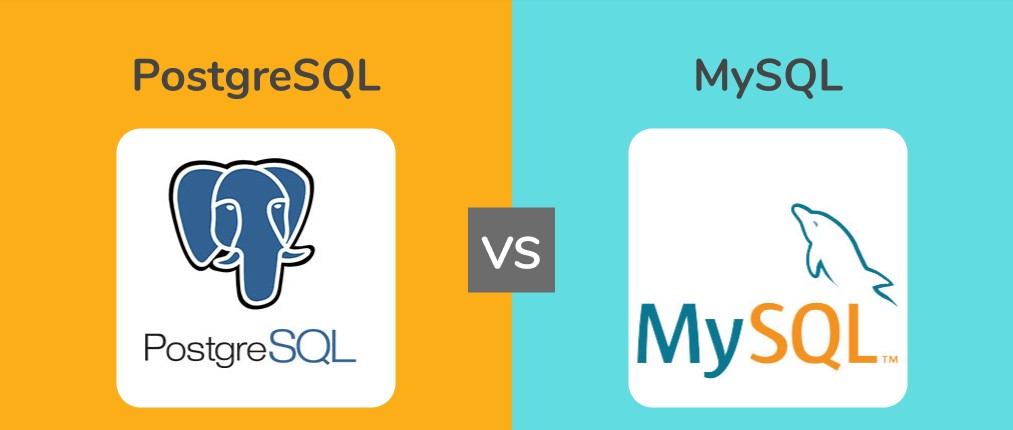MySQL vs. PostgreSQL: Comparing Two Powerful Relational Database Management Systems
When it comes to selecting a relational database management system (RDBMS) for your application or project, two of the most popular options are MySQL and PostgreSQL. Both databases have gained significant traction in the industry and offer robust features, performance, and scalability. In this blog post, we will explore the differences between MySQL and PostgreSQL, allowing you to make an informed decision based on your specific requirements.
Data Integrity and ACID Compliance
One of the fundamental aspects of a database system is ensuring data integrity and adherence to ACID (Atomicity, Consistency, Isolation, Durability) properties. In this regard, PostgreSQL has a strong reputation for its strict adherence to ACID compliance. It provides advanced transaction management and supports various isolation levels, ensuring data consistency and reliability.
MySQL also offers ACID compliance and supports transaction management, but it provides different isolation levels compared to PostgreSQL. It is worth noting that MySQL’s default storage engine, InnoDB, ensures ACID properties, while other engines, like MyISAM, do not offer full ACID compliance.
Performance and Scalability
MySQL and PostgreSQL have different architectural approaches, which can impact their performance and scalability in various scenarios. Historically, MySQL has been known for its excellent performance in read-heavy workloads, making it a popular choice for web applications and content management systems. It has a simple and efficient design that focuses on delivering fast query execution.
On the other hand, PostgreSQL is renowned for its extensibility and support for complex queries and data types. It excels in write-heavy workloads and complex analytical operations. PostgreSQL’s optimizer is considered highly sophisticated, allowing it to handle intricate queries and optimize execution plans effectively.
Both databases offer features like indexing, query optimization, and caching mechanisms to enhance performance. Choosing between them should depend on the nature of your workload and the specific performance requirements of your application.
Data Types and Advanced Features
PostgreSQL is often regarded as the more feature-rich database system, offering a wide range of advanced features and data types. It supports complex data types like arrays, JSON, and even spatial data, making it suitable for applications that require advanced data manipulation and analysis.
While MySQL has a more straightforward approach to data types, it provides a solid set of features that fulfill the needs of most applications. It offers robust support for relational data and includes features like replication, clustering, and partitioning, which are crucial for scaling and high availability.
Community and Ecosystem
Both MySQL and PostgreSQL boast active and vibrant open-source communities that contribute to their development and maintenance. However, due to its early adoption and widespread usage, MySQL has a larger user base and a broader ecosystem of tools, libraries, and frameworks. This extensive community support can be advantageous when seeking assistance or finding resources for troubleshooting.
PostgreSQL, while having a slightly smaller community, has a strong reputation for its commitment to standards compliance and innovative features. It has a loyal and dedicated user base that appreciates its flexibility, extensibility, and focus on data integrity.
Unlocking the Power of Kotlin Extensions for Android Development
Replication and High Availability
Both MySQL and PostgreSQL offer replication capabilities for creating redundant copies of data to ensure high availability and fault tolerance. MySQL provides various replication options, including asynchronous and synchronous replication, allowing you to set up master-slave or master-master configurations.
PostgreSQL also supports replication through its streaming replication feature, which allows you to create replicas of a database cluster. It offers both asynchronous and synchronous replication methods, giving you flexibility in designing a replication setup that suits your needs.
Security
Security is a critical aspect of any database system, and both MySQL and PostgreSQL offer robust security features. MySQL provides user account management, access control, and support for Secure Sockets Layer (SSL) encryption to protect data during transit. However, in terms of advanced security features such as column-level encryption and row-level security, MySQL lags behind PostgreSQL.
PostgreSQL has a reputation for its strong security features, including granular access control, fine-grained permissions, and support for advanced encryption mechanisms. It allows you to implement row-level security policies, ensuring that users only access the data they are authorized to see.
Community Support and Documentation
Both MySQL and PostgreSQL have extensive documentation and active user communities that provide support, forums, and resources for developers and administrators. MySQL benefits from its wide adoption and long-standing presence in the industry, resulting in a larger community and a wealth of available resources.
PostgreSQL, while having a slightly smaller community, has a dedicated and passionate user base that actively contributes to its development and documentation. The PostgreSQL community is known for its commitment to quality documentation and providing detailed information on advanced features.
Licensing
Another aspect to consider is the licensing model of the databases. MySQL is primarily licensed under the GNU General Public License (GPL) or commercial licenses offered by Oracle Corporation. The GPL allows free usage but may require additional licensing for certain scenarios or when distributing MySQL as part of a commercial product.
PostgreSQL, on the other hand, is released under the PostgreSQL License, an open-source license that permits free usage, modification, and distribution. The PostgreSQL License is more permissive, making it an attractive option for organizations that prioritize open-source licensing.
Choosing between MySQL and PostgreSQL ultimately depends on your specific requirements and the nature of your application. MySQL shines in read-heavy workloads and straightforward deployments, while PostgreSQL excels in complex data manipulation, analytical queries, and strict data integrity. Consider factors such as performance needs, scalability, data types, and community support when making your decision. Whichever option you choose, both MySQL and PostgreSQL are robust, reliable databases that can handle a wide range of applications effectively.

